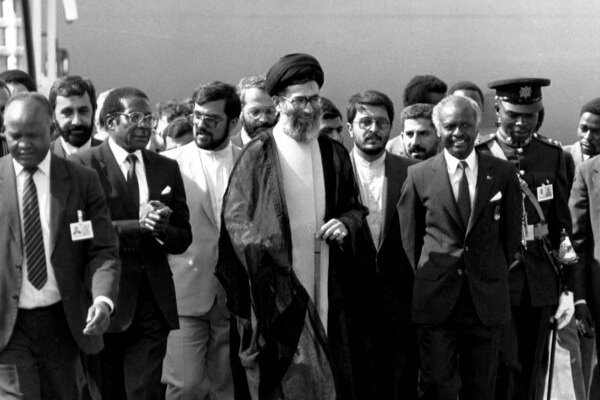Tehran – Iran officially became a member of the Non-Alliance Movement (NAM) in 1961. However, after the Islamic Revolution in 1979, the country appeared as an independent and active participant in the movement.
Iran joined Nam during the reign of Mohammad Reza Pahlavi, but its membership was largely iconic. The Shah regime was widely seen alongside Western colonial power, particularly the US and the UK, and was actually taken away in order to comply with the principles of non-assimilation.
As a key member of Baghdad Pact, Later was renamed the Central Treaty Organization (CENTO), but kept his distance from Nam under Shah. In fact, he was unable to attend Nam’s first summit in Belgrade in 1961 due to his involvement in this Western-led military alliance.
In the early 1950s, the United States led an effort to form a regional alliance in the Middle East, aimed at mitigating Soviet influence during the Cold War. However, ideological divisions in the region, including the Arab-Israel conflict and the rising Egyptian-led anti-colonial sentiment, have made it difficult to create a unified bloc that includes both Israel and Western colonial powers.
Iran last joined Cento after Türkiye, Pakistan, Britain and Iraq, but played an increasingly important role in the alliance. The Shah government prioritized Cento as an important aspect of its foreign policy and effectively sidelined Nam. As a result, Iran’s NAM membership during this period remained superficial and largely performance.
Turning Point: Islamic Revolution and Changes in Iran’s Foreign Policy
Cento has proven ineffective in curbing Soviet influences across the region. By the 1970s, the Soviet Union had deployed more than 20,000 troops in Egypt and established naval bases in Syria, southern Yemen and Somalia. The Baghdad Agreement began to be lifted in 1958 when the Iraqi coup overthrew the British-backed monarchy. Iraq quickly ended its alliance and established ties with the Soviet Union. Following this, the alliance was renamed Cento.
The final blow to the cent came after the military invasion of Cyprus in Turkish. This prompted Britain to withdraw its military contributions and significantly abolished the organization. Iran’s 1979 Islamic Revolution marked the decisive end to Iran’s involvement in the Alliance. The United States and the United Kingdom were then forced to circumvent bilateral defense agreements with countries such as Pakistan, Egypt and the monarchy of the Persian Gulf.
The Shah’s collapse has undergone a dramatic transformation of Iran’s foreign policy. The new Islamic Republic has replaced the pro-West direction of the previous regime with the “independent, neither east nor west” stance.
November 4, 1979 – A few months after the revolution, a group of Muslim Iranian students seized the US embassy in Tehran and demanded the extradition of the former Shah to survive trials in Iran.
Iran re-engaged in the non-aligned movement and applied for active membership shortly after the revolution.
In June 1979, Iran’s membership was approved at the NAM Ministerial Conference in Colombo, Sri Lanka. Just three months later, Iranian Foreign Minister Ebrahimyazdi, representing Prime Minister Mehdibazagan’s interim government, announced his official withdrawal from Iranian cent and took part in the 6th Nam Summit in Havana, Cuba. So he officially reaffirmed his full and active participation in the Iranian movement.
Post-revolution engagement and support for NAMs in Iran
By 1981, Tehran had become more involved with Nam as Iran’s internal political situation had stabilized. The movement has expressed support for Iran in a variety of international areas. During the Iran-Iraq War (1980-1988), Nam condemned the invasion of the Saddam Hussein regime and made diplomatic efforts to end the conflict. It also supported the adoption and implementation of UN Security Council Resolution 598, ending the war.
Iran, the 888th official member of the NAM, has since remained an active and influential participant. In 2012, Iran held the 16th NAM Summit in Tehran, envisaging the organization’s presidency in a three-year term from Egypt (2012–2015). The summit further highlighted voice advocates for Iran’s role as a regional force and the movement’s goals.
Over the past 40 years, Iran has played an active role in the NAM decision-making process and policy debate on key international issues. The movement has repeatedly expressed support for Iran’s peaceful nuclear program, including the International Atomic Energy Agency (IAEA) and the UN Security Council. In particular, NAM issued a statement defending Iran’s nuclear rights at the 2006 Foreign Ministerial Conference in Indonesia and the 14th Summit in Havana.
Iran and many NAM members share a common foundation on global issues such as Palestinian causes, opposition to Islamophobia and racism, and are seeking equitable access to global markets in developing countries, particularly the Global South.

